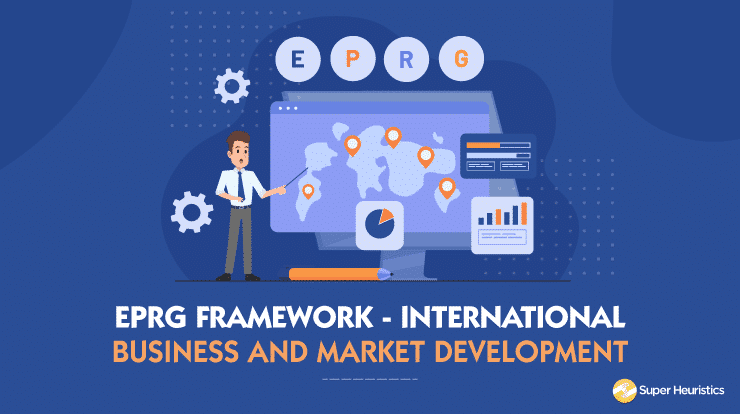
So, here we bring to you the SWOT analysis of the e-commerce giant- Amazon!
Now, the most elementary analysis of any company can be done by SWOT analysis. This helps us identify what are their capabilities and opportunities.
It also explains the “Why” behind their operations and decisions. SWOT analysis is a frequent topic you’ll find across our website.
Today, we will have a look at the SWOT analysis of Amazon. So, let's dig deeper and find out what business lines and initiatives the company is investing in.
Don’t forget to check out our other SWOT analysis articles on brands like Apple, Amul, and Patanjali.
SWOT Analysis: The What and The Why
Now, if you do a SWOT analysis Wikipedia search, you will find that it is a strategic planning technique. This means that it is a strategic tool to help you understand a company & analyse the industry it operates in.
A SWOT analysis can be referred to as a simple, but powerful, framework.
It ideally utilizes the company's strengths, mitigates weaknesses, minimizes threats, and leverages its opportunities.
Any project that you work on will need a SWOT analysis. This is the first step to identify the objectives of the venture. It will also help you to identify internal and external factors that are of prime importance in achieving objectives.
The SWOT analysis technique has four elements of a company, categorized as internal and external strategic factors. These four factors are represented in a matrix format.
Strengths and weaknesses are internal strategic factors that define dynamics, capabilities and limitations in internal operations and management.
Opportunities and threats are external strategic factors. These factors define the characteristics of the industry or market which directly impact (whether positively or negatively) its working and growth.
Let’s begin with our SWOT analysis of Amazon.
The analysis can reveal fascinating facts about the company’s capabilities. Further, it reveals reasons for their competitive advantage leading to their dominance.
Moreover, before doing a SWOT analysis of Amazon, let's study the company's background. This includes few basic details about the company like- origin, industry, offerings, competition, M&As, and revenue generation capabilities.
Today’s SWOT analysis of Amazon will also include an overview of Amazon’s business.

Marketing Concepts Mastery Course
Learn the essential marketing concepts. Create the best outcomes from MBA without depending on placements!
Understand BCG Matrix, SWOT Analysis, Ansoff Matrix and many other important marketing frameworks just like an expert MBA professional would. Solidify your concepts while building a personal brand in marketing.
Amazon: Company Overview
Now, who doesn’t have the Amazon App on their phone now? Everybody has that, right!
It’s a retail giant marketplace and leading OTT platform (Prime-Video). It offers one of the best subscription-based streaming services. Thus, the company successfully leads in three different broad industries- Internet, Online Retail, and Consumer Electronics.
Let’s talk about these business lines briefly then.
Business Lines
- Internet – Amazon Web Services (for Businesses), and Amazon Video (for Consumers)
- Retail – Amazon Marketplace, Amazon Prime, Whole Foods
- Consumer Electronics (manufacturers and distributors of Fire tablet, Fire TV and Echo)
Amazon is based out of Seattle, US, and was founded by Jeff Bezos back in 1994. The global giant serves over 17 countries worldwide through its Marketplace alone. It serves businesses spanning 190 countries through its cloud services platform AWS(Amazon Web Services).
Amazon generates revenue from products (e-commerce, home brands), services (subscription-based, and cloud services), and advertising. It features in the top 5 in global rankings of Most Valuable Brands, Most Innovative Companies & Best Employers by Forbes.
Thus, due to its scale and diversity, Amazon has many local and global competitors.
Today, I will categorize the competitors based on the business lines Amazon operates in.
Competitors
- Internet Web services (competing against Amazon Web Services) – Google Cloud Platform (Alphabet Inc.), Microsoft Azure, IBM Cloud, Oracle Cloud, VMware Cloud, Alibaba Cloud, and other Cloud Infrastructure and Platform Services alternatives.
- Video Entertainment services (competing against Amazon Video) – Netflix Inc., The Walt Disney Company (Disney Plus), Hulu, Apple TV+, and other High-Quality TV Show platforms.
- Amazon Retail (mainly Marketplace) – There are multiple categories of competitors in case of the Marketplace.
It includes online stores, online outlet stores by brands, physical brick-and-mortar stores, supermarkets, and third-party seller services. Some of the them are mentioned below.
1. Alternate e-commerce platforms include eBay.com, Alibaba, Etsy, Flipkart, and the more recent JioMart (India) among many other local online retail stores operating with their own distribution systems. E-commerce has expanded to various segments.For example, grocery online retail space in India has seen a huge increase in competitors such as BigBasket and Grofers.
2. The recent transition into e-commerce has been adopted by fashion brands too (which until recently, operated purely out of physical stores).
Leading apparel brands like H&M and Ensemble (luxury fashion brands) alike are struggling to establish their own e-commerce base.But, here too, Amazon offers popular products at competitive prices through its home-grown brand 'Amazon Basics'. Amazon makes this possible through deep insights from a huge database of consumer purchase behavior.
3. Physical stores and supermarkets are major competitors to Amazon. Companies such as Target, Walmart, Costco, Tesco, and DMart (India) ensure immediate access to a variety of quality-assured products.
Consumer Electronics (competing against Fire devices, and Echo) – Electronics, digital, and audio companies like Microsoft, Google, Xiaomi, NVIDIA, JBL, and many others offer tough competition to Amazon in various electronic product categories.There is no shortage of rival companies who are trying to topple Amazon in the online retail space.
A good model to follow for these companies is to do carry out an extensive SWOT analysis of Amazon.
Partnerships and Acquisitions
Amazon has made famous strategic acquisitions and mergers over the years with popular brands. It provides strong hints to the market about its potential growth or expansion strategy through its acquisitions. Above all, the company currently owns IMDb, Zappos, Whole Foods, Blink, and Alexa. These are among many other well-known brands in media, digital retail, and electronics & services.
Now that you understand the company's background, let us analyze its internal and external strategic factors.
SWOT Analysis of Amazon
Finally, let us now deep dive into the SWOT analysis of Amazon, i.e., Strengths, Weaknesses, Opportunities & Threats individually. This section will comprehensively prove why Amazon is such a huge success story.
Strengths of Amazon
Strengths are internal to a company. They are factors that determine competitive advantage and include the company’s position and operation – the reason behind why a company is doing well.
As we dig deep into the first part of Amazon SWOT analysis, this is what is working out extremely well for them –
1. Brand Name and Valuation
Firstly, Amazon has a strong foothold and a successful brand image in its market (across 19 countries) due to its Marketplace distribution network.
Secondly, in India, this was further enhanced by the acquisition of a minority stake in Future Retail, owning one of the largest offline retailers – Big Bazaar.
Amazon’s global brand value (based on Interbrand’s Annual Global Brand Ranking) in 2020 stands at US$ 200.6 billion, ranked second only after Apple. The company is also the third-highest in percentage value gain from the last year, only after Netflix and Chanel.
2. Customer-centricity
What do you do when you want to buy something, anything? You look up for it on Amazon.
Most probably, you order through that friend’s account who has an Amazon Prime subscription for the year.
Do you know why you rely so heavily on Amazon for all your needs, be it groceries to electronics?
It is because of their mission statement – to be the most customer-centric business in the world. In line with this idea, the company offers highly competitive costs and a seamless shopping experience.
Features such as Bestselling products, product/seller reviews and ratings, and seamless app experience offer customers a large amount of satisfaction.
Hence, it is the go-to choice for billions of people. Through insights from purchase data, Amazon successfully fulfilled the need for specific products, manufactured them under its own label – Amazon Basics.
Nevertheless, it has identified this new avenue of revenue generation – again through customer data.
3. Innovation and Cost Leadership
For instance, Amazon saves the cost of maintaining brick-and-mortar stores due to its business model of online selling. It effectively optimizes its cost and lowers inventory replenishment time.
And, through strategic alliances and partnerships with suppliers such as Cloudtail India, the company efficiently ensures the lowest cost structure, while exceeding quality and delivery expectations.
Despite competitive prices, Amazon surprises us with innovative additions to the product line and service offerings.
The latest addition is Amazon Fresh Store, a 2-hour grocery and essentials home delivery at select locations. It delivers all daily needs items such as milk, eggs, fresh veggies, etc. right at your doorstep.
4. Acquisitions
Amazon profits greatly from strategic alliances, partnerships, and acquisitions.
For instance, the successful acquisition of Whole Foods, along with a strategic alliance with Evi Technologies offers a significant competitive advantage in distribution & product placement.
It also enables service offerings to consumers, while bringing excessive revenue into the company.
5. Go Global and Act Local strategy
And, the greatest benefits possible for Amazon have been due to this strategy. After that, partnership with local supply chains and backward integration helped too.
In addition, strategic product placement, and understanding local needs before launching services in line with the country’s culture have helped too.
Owing to these, it stays on top even while competing intensely with various rivals.
6. Superior Logistics and Distribution Systems
Along with the largest merchandise collection, Amazon has a highly efficient logistics and distribution system. This ensures reliable, secure, and fast delivery of all kinds of goods right at your doorstep.
It offers fixed rates for different delivery time periods. Further, special discounts in delivery charges are offered to subscription-based Prime service users.
The Amazon Prime program has especially been a grand success. Amazon’s network of warehouses made this a possibility. The company is responsible for order fulfillment and returns, hence making more products eligible for prime services.
Now that we have covered the strengths of Amazon in the SWOT analysis of Amazon, you might have a clearer picture of how Amazon has successfully become the first brand one thinks of when it comes to online shopping.
Weaknesses of Amazon
What is weakness? It is something internal to the company. It highlights the problematic aspects which are inhibitors to the company’s phenomenal success. So, let's get to the Weaknesses in the SWOT Analysis of Amazon.
Amazon faces limitations due to the following aspects –
1. Easily imitable business model
Online retail business has gained traction as the world shifts to a digital economy, even more in the pandemic. Numerous national and local players have gained a strong foothold in the market.
Due to lower customer switching costs, players easily attract customers to specific operational or core competencies.
For instance, the grocery segment is currently highly competitive due to customer requirements. Numerous small and large players are competing to viably meet rising demands.
2. Lost margins and expansion challenges
Often called a major weakness of the entire industry, Amazon, like many other players, operates in near-zero margin business model. This has severely affected the profitability.
Even though it maintains high volumes and huge revenues, it is unable to make meaningful profits for the company.
In fact, the highly anticipated “Amazon Great Indian Festival” sale failed to live up to its expectations and translate to higher profits for Amazon. This is in spite of observing record sales every year at the mega sale.
While the company has managed to stay afloat so far, its free shipping and cheap prices might pose future threats.
3. Product Flops and Failures
Often, optimizing product search, ease of buying, and delivery speed lead to neglected product quality and validity of quality claims.
Amazon is notoriously popular for fake ratings and reviews and that adversely impacts the brand image. Few products sold under the Amazon Basics brand name are also known to be of inferior quality.
4. Limited brick-and-mortar presence
In developing countries like India, no physical presence proves to inhibit reaching the untapped market potential, especially in rural parts.
The concept of supermarkets through Amazon Go has taken off well in the US. Hence, a carefully modified version (a portable kiosk or hyper-store) would help the company reach a much larger target customer base.
5. Loss of competitive advantage
Amazon started off as an online bookstore, and soon expanded into electronics. But it over-utilized its first-mover advantage and its over-diversified product-line.
Why do we say so?
Well, it often leads to lower margins, higher losses, complex distribution channels, and higher returns, leading to lost sales at high logistical cost.
Amazon’s full-fledged online retail marketplace model might be the reason it is struggling for profitability even decades after serving the largest customer base possible.
You might be wondering, in spite of such big holes in the operations of the company while we addressed the weaknesses in Amazon's SWOT analysis, how is it still facing no issues in terms of capturing new consumer segments with its ever-widening product lines.
Read on for the next parts(Opportunities & threats) in the SWOT analysis of Amazon to understand how external factors can make or break the fortunes of a company like Amazon.
Opportunities for Amazon
An external strategic factor, opportunities highlight aspects that could be the company’s strengths, if they invest in it or implement it.
These are targets that the company can reach through its capabilities, which might give it a competitive advantage. Coming to opportunities in Amazon SWOT analysis, the company boasts of a number of great opportunities such as -
1. Expand operations in developing markets
As also highlighted in the company’s weaknesses, a huge untapped growth opportunity lies in developing nations, especially in rural and semi-urban India.
Expanding the distribution system such that it dives deeper into the less explored geographic segments is possible through higher warehouse touch-points in every state and a more extensive delivery system.
A major challenge to look forward to and take on is the growing demand for last-mile delivery.
2. Expand physical stores
While buying a stake in Future Group was a good decision for Amazon, they still need to expand the presence of their core brand “Amazon” by partnering with leading retailers.
This will help in establishing a wider presence and visibility of the brand, much beyond online deliveries, and into a retail giant.
3. Backward integration
Expand offerings such as Amazon Basics into other segments such as electronics and essentials.
This will again promote the brand to customers, offer differentiated product backed with customer-demanded features and expectations (from customer analytics), and improve profit margins (since you will also earn from the product, rather than just supply).
4. New markets
The pandemic has led to exponential growth in specific sectors such as healthcare with consistent growth in FMCG and essential commodities.
In this case, while Amazon has ventured into the grocery business with Amazon Fresh, the hyper-local business model for companies like Dunzo has offered opportunities for Amazon to leverage its wide distribution network.
It can also enter the pharmacy segment, which is currently having few competitors such as 1mg.
We just discovered the various opportunities Amazon has in this section of the SWOT analysis of Amazon. You might now realize the value of leveraging one’s existing circumstances to extract maximum benefits like Amazon.
Threats for Amazon
Another external strategic factor is threats. They challenge the company, derail its progress gradually if not taken care of but can be tackled through the company’s strengths.
A competitive environment poses risks and threats to business success.
1. Cybercrime
Data theft is the most common modern-day criminal activity that is putting internet users at an increased risk.
Further, there is a lack of awareness of the consequences of identity theft & hacking among the larger public. They can easily be conned by hackers into sharing personal details like bank account details.
Such incidents are drawing common people away from online purchases and more towards offline and in-store purchases.
Why so? It provides security, along with the much-questioned quality assurance.
2. Aggressive competition and lawsuits
More and more online retail stores have cropped up, and the shift to digital accelerated by the pandemic has made things worse for Amazon.
Now clearly, Amazon dominates the overall e-commerce industry in India, with few local, regional, and national players such as JioMart that have recently cropped up, having the potential to challenge the giant.
Due to this highly competitive nature of the market, the aggressive price wars have led the e-commerce companies into lawsuits by sellers and rivals alike.
The obsessive focus on cost leadership has led Amazon to play a very aggressive, albeit self-harming game of losses.
3. Fake products and reviews
The marketplace is over-crowded with a wide variety of products within each category, which is what has appealed to the masses.
However, the sheer lack of quality checks in seller ratings and product reviews has led to customers losing trust in the platform to make a reliable purchase.
In fact, more than 40% of purchased goods are known to be returned or exchanged by customers, which means double the logistical cost at the same product price.
4. Government regulations
The brand is notorious for its pricing strategies, and market policies regarding fair play and anti-competitive practices.
Sadly, due to lawsuits and serious expenses, and restricted operations due to multiple controversies, the company cannot be profitable any time soon.
As we know, the company is also often held liable for damages by counterfeit products sold through third-party sellers. Also, the restrictions in the sale of non-essential items by the central government led to a loss of over US$ 398 million.
With rising support for local sellers driven through government schemes, companies like Amazon are facing the brunt in domestic growth.
One cannot simply afford to look beyond the threats in Amazon's SWOT analysis as if not mitigated, these might go on to mount significant challenges in the future growth of the company.

Case Analysis Blueprint Course
Use marketing frameworks like these to solve business case studies with ease
Frameworks like the SWOT analysis are extremely crucial to analyze the most complex case studies. Get to know how to analyze a marketing case study comprehensively in just 5 slides. Which means that the next time you need to analyze a case, you know exactly how to ace the case
Conclusion
In this article, I hope that you got how this analysis helps in understanding different aspects of the business. And, how amazing insights get uncovered while we do this.
SWOT analysis can give us an in-depth view of its strengths, weaknesses, opportunities, and threats. And, this is much needed before you dive into any further analysis or project research.
Only, when you are clear about the business you are working for, can you perform well-informed projects and analysis from company data. The above SWOT analysis of Amazon provides a potent example in this case.
So, basically, your project must always begin with a SWOT analysis, of the company, the brand, the division you are working in, or the entire business. Make sure to clearly specify the scope of your analysis, to remain in context.
Next, as an exercise, why don’t you try gathering news and information to perform a SWOT analysis for Amazon Prime Video, or AWS?








That is a amazing analysis. Thank you